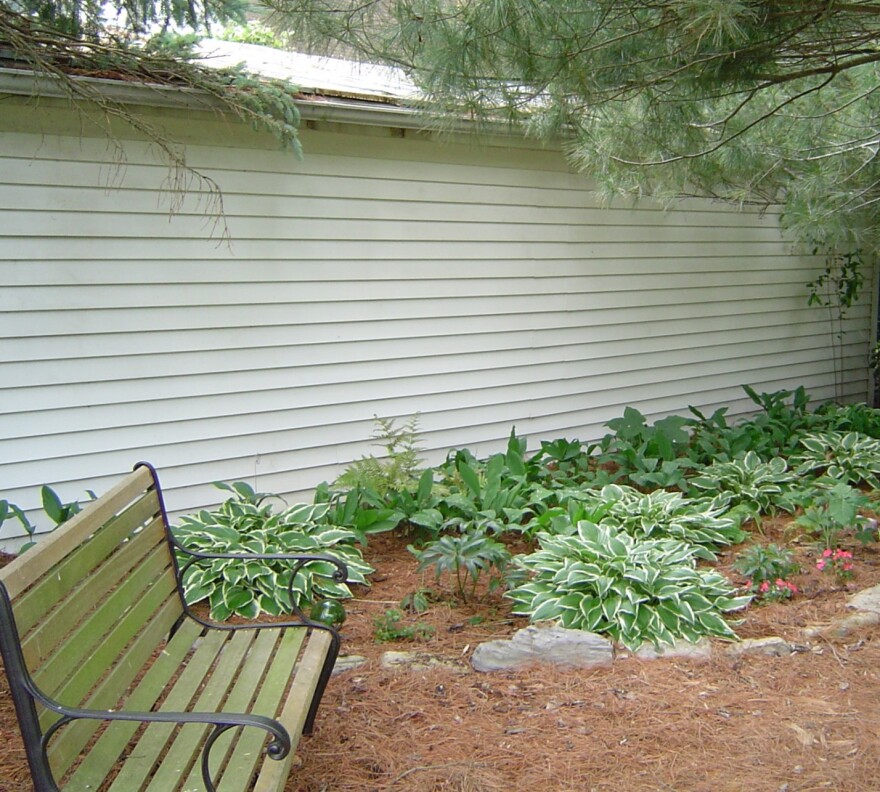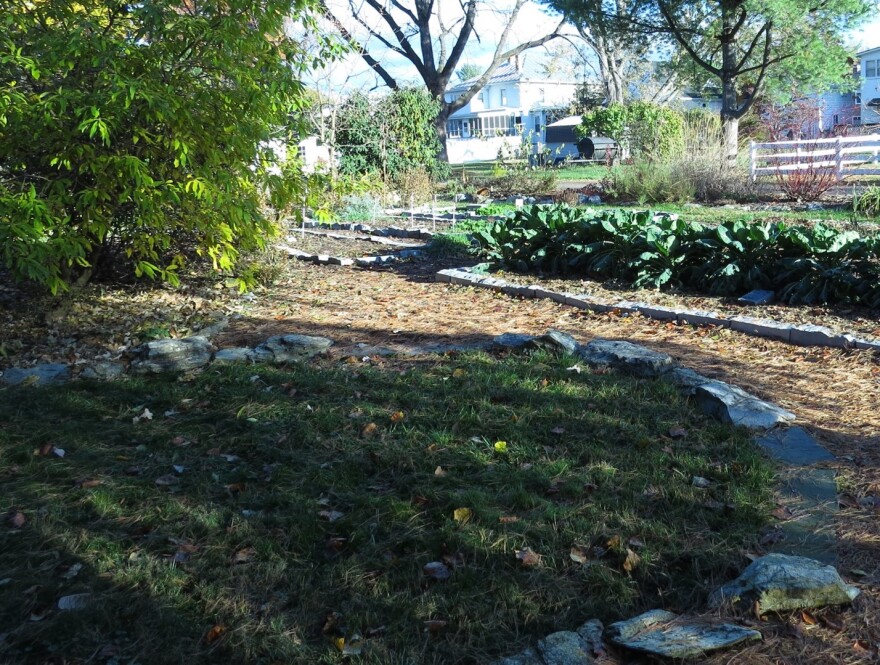In the yard, I love paths with an edge. I am drawn to the visual change from lawn to bed with a sidewalk or rock line. Previously, part of my garden plan was to remove dead stalks in fall, using this material for compost, and I would rake and compost leaves. As I have learned more about what makes a good habitat for insects, my garden plan has changed radically.
My husband and I started laying out beds around the trees. In our backyard, the plan was for ‘tree beds.’ I like the lawn for walking paths. The grass has a great color and texture, so some of it can stay. We used newspaper, mulch, and in fall the leaves to smother the grass. Over time, these tree beds became the foundation of our landscape. Having a place to rake the leaves and leave them alone means overwintering insects have a place to stay, either overwintering as adults, larvae, or eggs.

Once we had a grass-free base, we could add in plants like spring ephemerals. Bloodroot (Sanguinaria canadensis) and Virginia Bluebells (Mertensia virginica) — both natives — went under the trees. The Common Blue Violet (Viola sororia) just showed up and it is one of the best additions. With the bloodroot, bluebells, and violets, we had a solid ground cover that weeds could not invade, colorful flowers across a nice time span, and we watched the Great Spangled Fritillary (Speyeria cybele) numbers dramatically increase in our yard. The common violet is the host plant for 30 species of fritillary butterflies!

In fall, I do not clean up the stalks or stems left over from perennial growth. This is a huge time savings. Instead, I leave what was left from last year until the new growth is catching up. I asked the entomologist at Blandy Farm when I should clean up to help insects. The answer was as long as I could stand to leave it alone, leave it alone! There is no date or temperature that signals all is ready for an annual clean up – the insects are coming out at all different times and temperatures. So, I have started a regime of leaving the stalks and stems as long as possible for the overwintering insects. I hope to see an increase in insects, like what we observed with the fritillary butterfly.
For more information on a backyard habitat:
- Homegrown National Park, Dr. Doug Tallamy’s work on why just a little less lawn is great for the ecosystems of North America
- For the Birds, Butterflies & Hummingbirds: Creating Inviting Habitats by Mary Free, Virginia Cooperative Extension Master Gardener (Publication HORT-59NP)
- Virginia Native Plant Society
- Virginia Department of Wildlife Resources’ Habitat at Home with many guides in PDF format available
- Plant Virginia Natives for guides to nurseries and plants
Happy spring!
- Dr. Robyn Puffenbarger, a VHG co-host, Bridgewater College Professor, and Virginia Cooperative Extension Master Gardener


